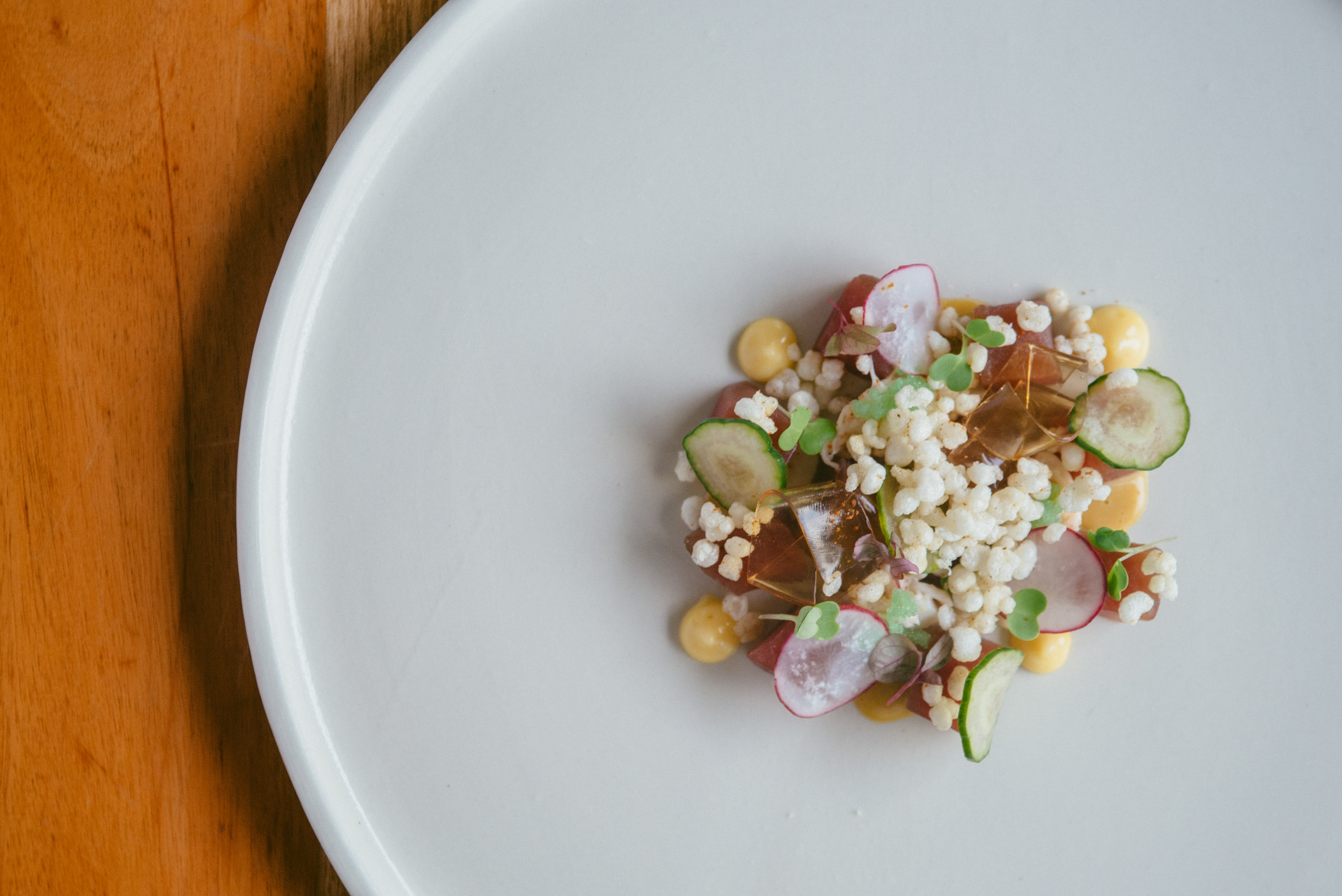In the highlands, where rice is a scarcity rather than a staple, the natives grow, reap, and savor the adlai. The tear-shaped crop, able to grow in almost all soils, is known to withstand periods of dry spells and downpours. It has become a symbol of resilience through the changing climate. The Department of Agriculture has been promoting the crop, creating a niche market, and prodding more farmers to cultivate the grain. Slowly, the adlai is shedding off its status as a mere substitute for rice.
Here, four pioneers of the culinary industry present their own renditions of the adlai. Whether cooked in chicken stock or caught in the conflict between sweet mango and goat’s cheese, the grains exert the same pronounced texture. It complements the rest of the dish yet asserts its own integrity: breakable yet bold, and showing a reverence for grit.
Imagining Farm House Dessert by Miko Aspiras
Miko Aspiras combines raw, unwashed Tapol adlai with the washed and roasted Kibua variety. He crushes the Tapol and combines it with caramelized honey and butter, while cooking the Kibua in coconut milk and mixing it with muesli and cacao nibs.
“Adlai is very versatile,” says Aspiras. “It doesn’t lose its crunchy characteristic as easily as corn and rice. It’s very mild but it gives any dish a perfect smoky flavor.”
A bold departure from the common dessert, the nutty adlai texture finishes the unlikely combination of Davao goat’s cheese and mango mousse.
Tuna Kilawin with Puffed Adlai by Rob Pengson

“Filipino food isn’t really given much reverence as international cuisines,” says Rob Pengson.
Playing up the local fare, he took the essentials of tuna kilawin, enhanced it with atchara and vinaigrette, and combined it with Japanese elements: mirin jelly, miso mayonnaise, and crab salad, organic from Visayas.
“Instead of making it like sushi with adlai, we puffed up the adlai like rice crispies. It adds texture to an otherwise very delicate dish.”
Comparison is the thief of joy, he adds, and so instead of comparing new Filipino fare with the tastes of the traditional, Pengson states, “I want to drive it to a place it’s never been before.
Adlai and Chicken Adobo Ssam by Amy Besa
When Amy Besa was still in the Netherlands cooking for De Karpendonkse Hoeve, the Michelin-starred restaurant in Eindhoven, she served chicken adobo paired with adlai. That the owner herself wanted to acquire the grains for her restaurant was enough indication of the dish’s success. For this ssam, lollorosso wraps the chicken adobo and adlai cooked in chicken stock and leeks. Besa retains the al dente texture of the large adlai variety from Batangas, and pairs the dish with guava and pear chutney.
“[Adlai] has its own integrity,” she says. “A cook needs to understand the quality, texture, and flavor of the grain.”
Insalata Filipina by Margarita Forés
Championing both Italian and Filipino cuisines, Gaita Forés has rendered the insalata in the colors of our flag. The adlai, cooked like rice, is colored with blue tarnatte, a medicinal flower that’s also considered an aphrodisiac. Save for the truffle oil, each ingredient is sourced from within the country: red and yellow capsicums from Bukidnon, heirloom tomatoes from Tagaytay, buffalo mozzarella from Negros. The adlai renders a nutty texture to the dish, reminiscent of farro grown in Italy.
“What I like about the adlai is it’s something we can now say is proudly Filipino,” says Forés. “I love using it and promoting it. It’s healthy, interesting, and a little bit exotic.”
Read more:
Feel good food goes beyond taste at Hineleban Cafe
Berna Romulo-Puyat loves local produce and she tells us why we should, too